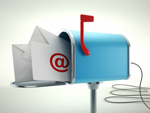There seems to be a lot of rejection these days.
No, I’m not talking about your Facebook friend requests. Rather, it’s your email that’s getting the snub.
In a March 2012 study by Return Path, only 76.5% of commercial emails reached their intended inbox in the second half of 2011, down from 81% from the first half of the year.
Furthermore, in North America, overall inbox placement rates fell from 86.5% to 79.3%, spam increased 30%, and blocked email increased 57% during the same time period. Europe and Asia Pacific are seeing similar trends.
This is not good news for email marketers. Crafting amazing email copy and subject lines are no longer enough. Now we must compete with an influx of spam and pass grouchy ISP-level filters.
But there are steps you can take to avoid this fate. Follow these 5 tips to improve your email deliverability:
1. Understand key email deliverability terms. Before we dive into some of these tips, it’s crucial to understand how email deliverability works. Understanding spam traps, honeypots, black lists, and other important terms will improve your email effectiveness. You can find a list of 19 Email Deliverability Terms and their definitions here.
2. Keep your email list healthy. According to MarketingSherpa, the average email list depreciates by 25% every year. Keeping stale or bad emails in your database can hurt your deliverability. That’s why it’s increasingly important to scrub your email list to keep it clean and healthy. Best practices for list hygiene include:
- Deleting duplicates
- Ensuring unsubscribes and hard bounces are automatically removed (repeatedly emailing bounced emails can cause your IP address to be blacklisted)
- Not storing alias emails (i.e. contact@company.com)
- Reaching out to inactive subscribers to see if they still want to be included on your list
- Requiring a double opt-in subscription process to ensure emails are valid
3. Just say “no” to purchased lists. I can’t stress this enough – don’t buy or rent lists, or scrape websites for email addresses. Ever. Buying lists is the easy way out. Sure, it has short term benefits but it hurts you in the long-run. If you don’t believe me, then learn from the list-purchasing fiasco from the folks at Javelin Marketing; “Upon emailing to 100,000 of the records, 85,000+ bounced, clogged up the mail server, and I was fired by our web-based email provider.” Ouch.
The best way to grow your email list is with permission-based marketing, i.e. an opt-in strategy. Acquiring opt-in addresses improves email performance simply because you are sending email to people who actually want to hear from you. Imagine that.
4. Avoid spam trigger words in your email copy. Is your clever email copy ending up in the junk folder? Be careful about using spam trigger words in your subject line and email copy. Don’t use words like “free,” “guarantee,” and “no obligation.” Some email marketing software providers include a spam check tool, but I also suggest ingraining these into your brain so you can avoid writing them all together.
5. Maintain a good sender score. Do you know your sender score? Knowing your sender score is a great way to gauge the deliverability and reputation of your outgoing emails. Return Path reports that 83% of the time an email is not delivered to an inbox, it is due to a poor sender reputation. To check your Sender Score, visit Return Path’s registration page. Some best practices to improving your sender score include:
- As mentioned above, keep your list healthy, avoid spam words and only send email to people who have given you permission.
- Email unengaged recipients less frequently, and then, over a certain period of time with no activity, remove them from your list all together. Keeping a lot of inactive emails on your lists makes it appear as if it’s poor quality.
- Segment your lists for targeted sends. Often times very large bulk sends can be seen as spam. Plus, targeted sends generally perform better (higher open rates and click-through rates), which helps to improve your sender score.
- Check for spam complaints and make sure you’re not blacklisted. DNSstuff.com lets you check whether you are a blacklisted sender.
- Control the frequency of your email sends. If you send email for a week straight, then go silent for a month only to pick back up again, you might be penalized with a lower sender score. ESPs like controlled consistency when sending email. As you perfect your email marketing machine, you’ll be able to test the optimal email sending frequency for your recipients.
Getting into the inbox isn’t rocket science, but knowing what it takes to improve deliverability makes all the difference. If you take the time to follow these five best practices, you’ll be your way to achieving an awesome deliverability rate and a high sender score.
This is a guest post by Jessica Meher, an inbound marketing manager at HubSpot. HubSpot makes inbound marketing software that helps you generate and manage your leads more effectively.




